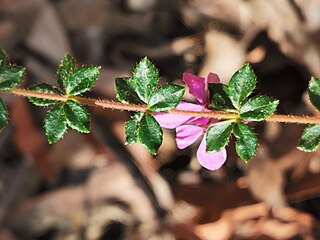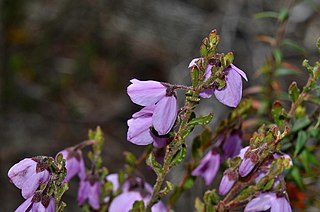
Waratah (Telopea) is an Australian-endemic genus of five species of large shrubs or small trees, native to the southeastern parts of Australia. The best-known species in this genus is Telopea speciosissima, which has bright red flowers and is the New South Wales (NSW) state emblem. The waratah is a member of the family Proteaceae, flowering plants distributed in the Southern Hemisphere. The key diagnostic feature of Proteaceae is the inflorescence, which is often very large, brightly coloured and showy, consisting of many small flowers densely packed into a compact head or spike. Species of waratah boast such inflorescences ranging from 6–15 cm in diameter with a basal ring of coloured bracts. The leaves are spirally arranged, 10–20 cm long and 2–3 cm broad with entire or serrated margins. The name waratah comes from the Eora Aboriginal people, the pre-European inhabitants of the Sydney area.

Telopea speciosissima, commonly known as the New South Wales waratah or simply waratah, is a large shrub in the plant family Proteaceae. It is endemic to New South Wales in Australia and is the floral emblem of that state. No subspecies are recognised, but the closely related Telopea aspera was only recently classified as a separate species.

Tetratheca is a genus of around 50 to 60 species of shrubs endemic to Australia. It is classified in the botanical family Elaeocarpaceae, now known to encompass the family Tremandraceae, which the genus originally belonged to. It occurs throughout extratropical Australia, and has been recorded in every mainland state except the Northern Territory.
T. neglecta may refer to:

Tetratheca thymifolia, commonly known as black-eyed Susan or thyme pink-bells, is a small shrub in the family Elaeocarpaceae found in southeastern Australia.
Joy Thompson was an Australian botanist. Her main research areas were taxonomy and Myrtaceae.

Tetratheca pilosa is a flowering plant in the family Elaeocarpaceae, endemic to Australia. It is a small shrub found in dry sclerophyll forests, open heathlands and woodlands of Australia. It was first recorded in 1805 by French botanist Jacques Labillardière.
Tetratheca deltoidea, also known as granite tetratheca, is a species of plant in the quandong family that is endemic to Australia.
Tetratheca similis is a species of plant in the quandong family that is endemic to Australia.
Tetratheca retrorsa is a species of plant in the quandong family that is endemic to Australia.
Tetratheca remota is a species of plant in the quandong family that is endemic to Australia.
Tetratheca paucifolia is a species of plant in the quandong family that is endemic to Australia.
Tetratheca parvifolia is a species of plant in the quandong family that is endemic to Australia.
Tetratheca fasciculata, also known as Cronin's Tetratheca, is an extinct species of plant in the quandong family that was endemic to Australia.
Tetratheca decora, also known as black-eyed susan, is a species of plant in the quandong family that is endemic to Australia.
Tetratheca rupicola is a species of plant in the quandong family that is endemic to Australia.

Tetratheca labillardierei, also known as Glandular Pink-Bells, is a species of plant in the quandong family that is endemic to Australia.
Tetratheca insularis is a species of plant in the quandong family that is endemic to Australia.

Tetratheca shiressii is a species of flowering plant in the quandong family that is endemic to Australia.

Tetratheca ericifolia is a species of flowering plant in the quandong family that is endemic to Australia.








